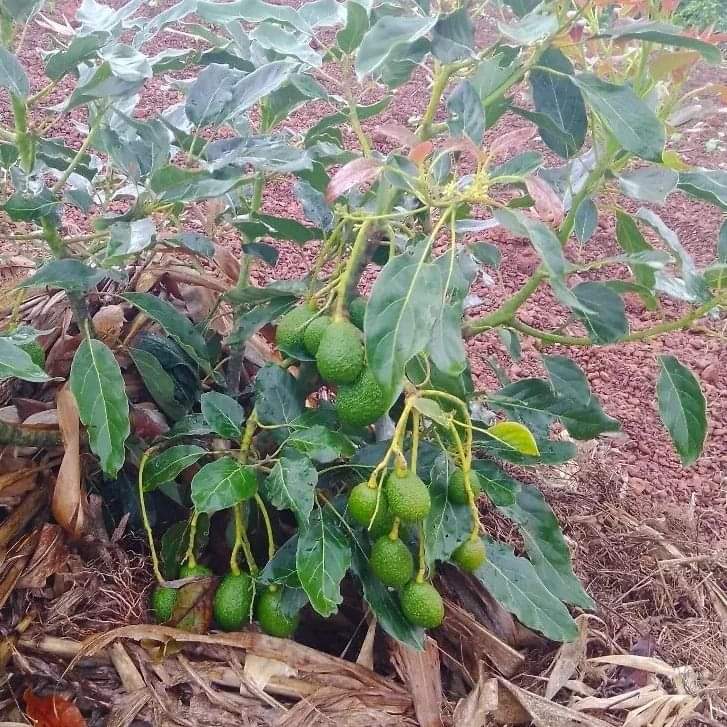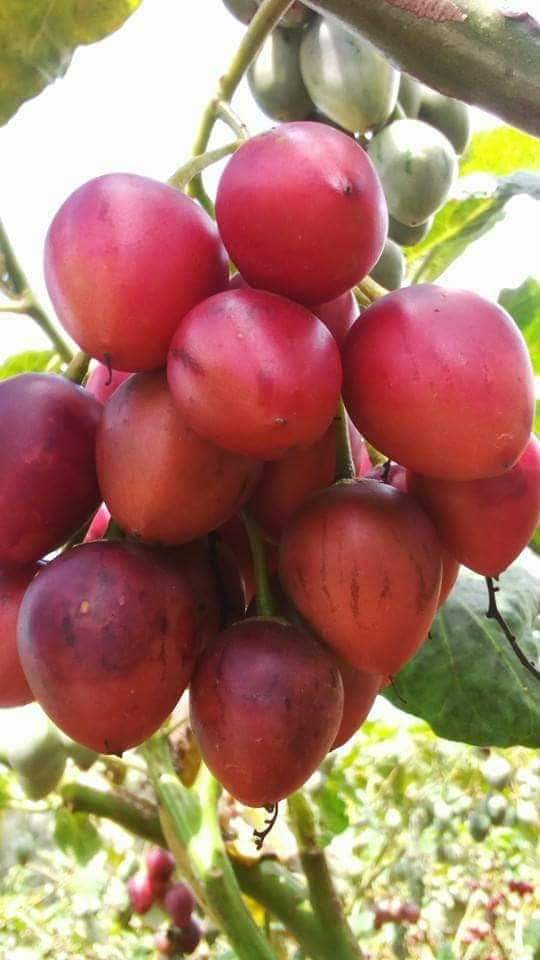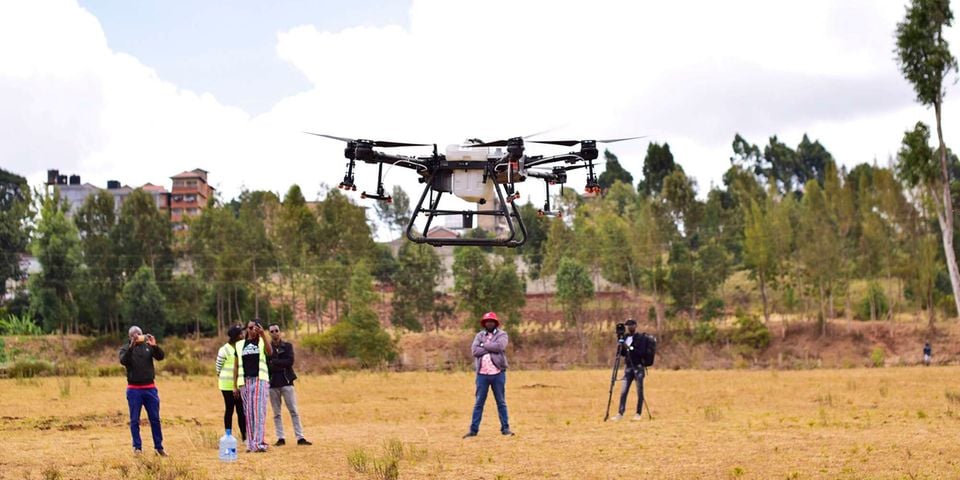A COMPREHENSIVE GUIDE ON HASS AVOCADOS GROWING IN KENYA
There are various varieties of avocados in Kenya, which include
Fuerte – bears thin skinned green-pebbled fruit of very good flavor. It
has many lines with different shapes.
Hass- bears medium-sized, rounded, rough-skinned, black fruits.
Nabal – its fruits are green with a good flavor.
Puebla- bears deep purple to maroon round fruits and is normally used
as a rootstock.
Others– Reed, Simmonds, Booth 7&8, Pinkerton, Bacon, Lula and Taylor
Hass variety is the main variety grown in Kenya although Fuerte is developing
strongly, especially among small growers. These two varieties are grown majorly
for the export market.
Ecological Requirements
Altitude
Hass avocado grows well from an altitude of between 1000-2900 m above sea
level. These areas include Eastern, central, western, Nairobi, western, and parts of
Nyanza provinces.
Soil
Hass avocados grows successfully on many types of soil provided they are deep,
with good water holding capacity and free draining. Water logged or saline soils
are unsuitable because Hass avocado plants are sensitive to excessive soil
moisture and high salinity. The optimum pH is 5.5-6.5.
Temperature
Temperatures between 16-24 degrees centigrade are good for growing hass
avocados and the maximum temperature for avocado is 33 degrees centigrade.
Above this temperature the fruits and trees can be damaged.
High temperatures and direct sunshine can cause sunburn damage to exposed
fruits.
Hass avocado trees are not tolerant to frost especially those adapted to humid
tropics. The sensitivity of trees to low temperature is influenced by a wide range
of factors like the age of the tree, its Vigor, growth stage and its health, among
others.
Rainfall & Humidity
Hass Avocados are highly adapted to different rainfall conditions, however, a well
distributed annual rainfall of up to 1600 mm is optimal for good production.
Climatic conditions with alternating dry and rainy seasons are best for avocados.
Irrigation is essential where rainfall is not adequate.
Too much rain during flowering causes flower abortion resulting in significant
reduction in production. Fungal diseases are also problematic in very wet
weather.
A short period of dry weather of up to two months usually triggers flowering
especially in tropical climates not subject to marked falls in temperature.
Hass avocado trees requires high relative humidity at flowering, about 70-80 per
cent, then moderate levels during the fruit swelling stage. Too much humidity
encourages the proliferation of pests and diseases such as scales, scab and
anthracnose among others.
FIELD OPERATIONS
Propagation
Propagation is majorly by grafting.
Grafting should be carried out when the seedlings reach pencil thickness. Wedge
grafting method is most successful.
It should be done at the point where rootstock is soft, and the scion should be
dormant at the time of grafting and should match the size of the stock.
The grafting point should be wrapped thoroughly to exclude water from the
union and to prevent it from drying out.
Planting Procedure
Land preparation. The land should be cleared and cultivated to a depth
of about 30 cm
Prepare planting holes about 60cm x 60 x 60cm * 60m. The general
spacing for pure stands of avocadoes is 7M by 7M.
Fill the holes with topsoil mixed with manure at least 10 kgs per hole. In
order to improve on nutrients uptake by the young plants as well as
stimulating growth, it is advisable to incorporate manure and DAP with
HUMIPOWER at the rate of 1ton manure and 50kg fertilizer in 1kg Hum
power each.
Water the holes unless the soil is wet enough.
Plant the grafts in the holes, to the same depth as they were in the
nursery. The bud union should be about 300mm above the ground.
Water the seedlings immediately after planting if it is not in the rainy
season.
Shade the young plants, and if planted in a windy area, a windbreak is
also necessary to protect the plants from leaning to one side and to
help prevent leaf shedding and bruising.
Cultural practices
Pruning
All suckers and dead branches are removed from main trunk branches.
The canopy is pruned to keep the tree to a height of 5-7 m and for ease of
picking.
Pruning should however be minimized because the tree is very susceptible to
sunburn.
Weeding
The area around the tree should be kept clean by weeding and removal of all
fallen fruits.
Weeds compete for growth factors like nutrients and water and harbor pests and
diseases.
PESTS & DISEASE MANAGEMENT
Pests
Fruit flies
Various species of fruit flies attack avocados. Some lay eggs under the skin of the
fruit that is just beginning to ripen, but others attack young and old fruit. When
the fruit reaches about the size of a golf ball a sting lesion appears as a slight
puncture mark surrounded by a white exudate. As the fruit develops the lesion
becomes dry and turns into distinct star-shaped crack on the skin surface.
False coddling moth
After emerging from the egg, the young caterpillar tunnels into the fruit and a
discoloration appears at the point of entrance. While inside they feed on the pulp,
causing premature ripening and fruit drop.
Thrips
These are small, slender insects with two pairs of fringed wings which feed by
sucking the plant sap.
They cause damage to the leaves and fruit and the affected parts become
whitish or silvery and are usually covered by dark-colored droppings.
Attacked fruits develop a leathery brown skin and feeding is most common on
young fruits.
Scales
These are small, stationary brown greenish insects commonly found sucking sap
from avocado leaves.
The soft scales excrete large amounts of honeydew, which lead to the
development of sooty mold on leaves, branches and fruit. The honeydew also
attracts ants. Armored scales may encrust young twigs, leaves and fruit and do
not produce honeydew.
Damage can be serious on young tress and small twigs may be killed. Although
the presence of scales on the skin of fruit does not cause internal damage, it may
lead to rejection of fruit, especially if grown for export.
Spider mites
Attack by spider mites produces circular necrotic spots covered by dense
webbing. As mite populations increase, feeding causes leaf distortion and
eventual drop.
The growth of young trees is seriously affected and yields can be reduced
significantly.
Bugs
The adults and nymphs of the coconut bug feed on young and mature avocado
fruit. Bug feeding causes necrotic bruise-like depressions. A hard lump develops,
which can be easily removed when the fruit is peeled.
Helopeltis bugs prefer to feed on young plant tissue piercing the shoots, stems,
leaves peduncles, petioles and fruits. Their feeding causes brown necrotic
patches. Attacked leaves present angular lesion, which often drop out leaving
holes as it attacked by biting insects. Feeding on young shoots causes dieback of
the shoots, while on fruits, it causes a dark water-soaked mark around the
feeding puncture, turning into a lesion with a light brown center and black edge.
The fruit may exude sap that forms a whitish deposit as it dries.
Stink bugs emit a characteristic unpleasant odor when disturbed and they
usually feed on the developing fruit. The feeding punctures cause local necrosis
resulting in fruit spotting, and deformation.
Swarming leaf beetles
Swarms of this insect can cause severe damage to the new terminal growth.
Damaged terminals have a burnt look and development in young trees can be
severely retarded. Occasionally developing fruits are attacked.
Diseases
Avocado root rot
This disease can attack trees of any size and age. Leaves of infected trees are
small, usually pale or yellow green, often wilted and fall prematurely giving the
tree sparse appearance.
In advanced stages of the disease, branches die-back and fruit remains small
and crop yield is drastically reduced. Feeder roots get blackened, decayed and
die. The infected tree dies prematurely.
Anthracnose
This is a major post-harvest problem when fruit is at maturity stage. Infection
takes place when fruit is still very young and the fungus stays dormant till the fruit
ripens. The disease appears as sunken spots on the fruit and the spots are
manifested as a rot, which can penetrate deep into the flesh. In wet weather, the
spots may be covered with mass of slimy, salmon pink fungal spore mass.
The disease may develop very rapidly in storage if conditions are humid and
warm.
Scab
The fungus readily infects young, succulent tissues of leaves, twigs and fruits.
Lesions appear as small dark spots, slightly raised, oval to elongate. These spots
coalesce, giving a corky appearance to the surface of the fruits, impairing the
appearance but not the internal quality of the fruit.
Fruits are only susceptible when young until about half size development.
Cercospora leaf & fruit spot
This disease is primarily a problem to quality of fruits and the severity of infection
varies from season to season and can cause significant losses.
On infection, lesions appear as small light-yellow spots on fruits and leaves, and
later become reddish brown and eventually become hard and crack.
On leaves, the infected tissue becomes thin and brittle, and often drops out,
leaving a ragged hole.
Bacterial soft rot
Infected fruit has a darkened metallic sheen externally. Internally, the flesh is grey
to black and soft with a putrid smell.
Stem end rot
A dark brown to black rot begins at the stem end as a dark brown ring and the rot
proceeds towards the other end. This rot produces dark streaking of the water-
conducting tissues, and this symptom distinguishes stem end rot from
anthracnose.
Nutrition
To obtain good growth and high fruit yields, it is important to supply the plants
with necessary nutrients.
Basal and foliar fertilizers should be applied.
Basal fertilizers are absorbed by the plants through the roots and include DAP,
CAN, NPK, UREA, among others. Farmyard manure could also be added,
depending on the organic matter of the soil.
Foliar fertilizers are absorbed by the plants through the foliage and they supply
both macro and micro nutrient elements..
Application of these fertilizers prevents nutritional deficiencies.





